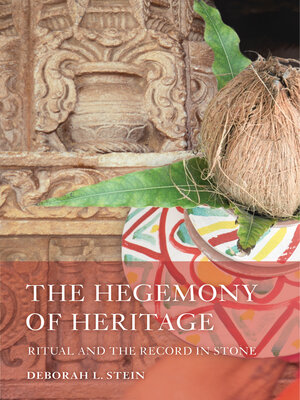The Hegemony of Heritage
ebook ∣ Ritual and the Record in Stone · South Asia Across the Disciplines
By Deborah L. Stein

Sign up to save your library
With an OverDrive account, you can save your favorite libraries for at-a-glance information about availability. Find out more about OverDrive accounts.
Find this title in Libby, the library reading app by OverDrive.



Search for a digital library with this title
Title found at these libraries:
| Library Name | Distance |
|---|---|
| Loading... |
A free ebook version of this title is available through Luminos, University of California Press's Open Access publishing program. Visit www.luminosoa.org to learn more.
The Hegemony of Heritage makes an original and significant contribution to our understanding of how the relationship of architectural objects and societies to the built environment changes over time. Studying two surviving medieval monuments in southern Rajasthan—the Ambika Temple in Jagat and the Ékalingji Temple Complex in Kailaspuri—the author looks beyond their divergent sectarian affiliations and patronage structures to underscore many aspects of common practice. This book offers new and extremely valuable insights into these important monuments, illuminating the entangled politics of antiquity and revealing whether a monument's ritual record is affirmed as continuous and hence hoary or dismissed as discontinuous or reinvented through various strategies. The Hegemony of Heritage enriches theoretical constructs with ethnographic description and asks us to reexamine notions such as archive and text through the filter of sculpture and mantra.
The Hegemony of Heritage makes an original and significant contribution to our understanding of how the relationship of architectural objects and societies to the built environment changes over time. Studying two surviving medieval monuments in southern Rajasthan—the Ambika Temple in Jagat and the Ékalingji Temple Complex in Kailaspuri—the author looks beyond their divergent sectarian affiliations and patronage structures to underscore many aspects of common practice. This book offers new and extremely valuable insights into these important monuments, illuminating the entangled politics of antiquity and revealing whether a monument's ritual record is affirmed as continuous and hence hoary or dismissed as discontinuous or reinvented through various strategies. The Hegemony of Heritage enriches theoretical constructs with ethnographic description and asks us to reexamine notions such as archive and text through the filter of sculpture and mantra.







